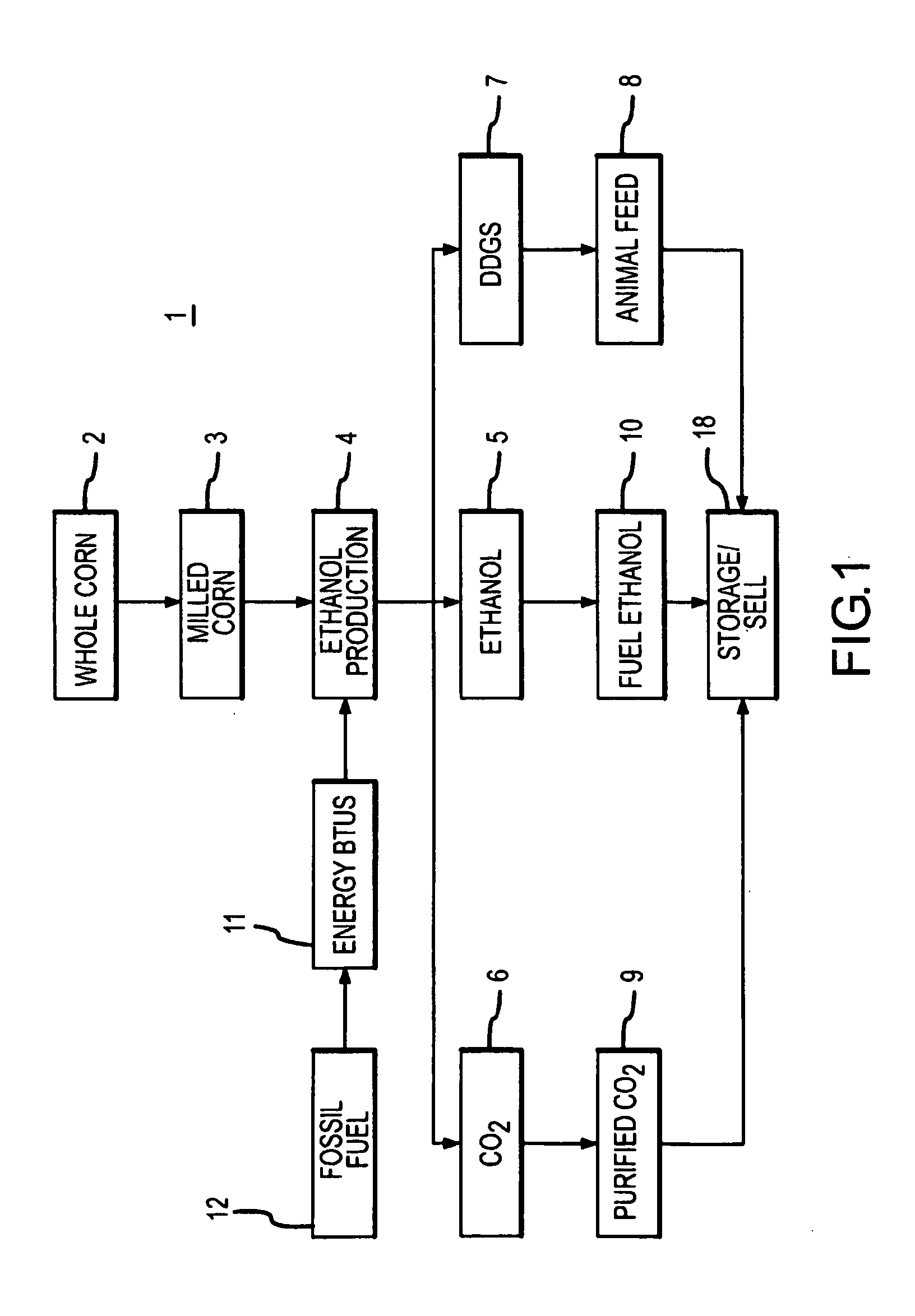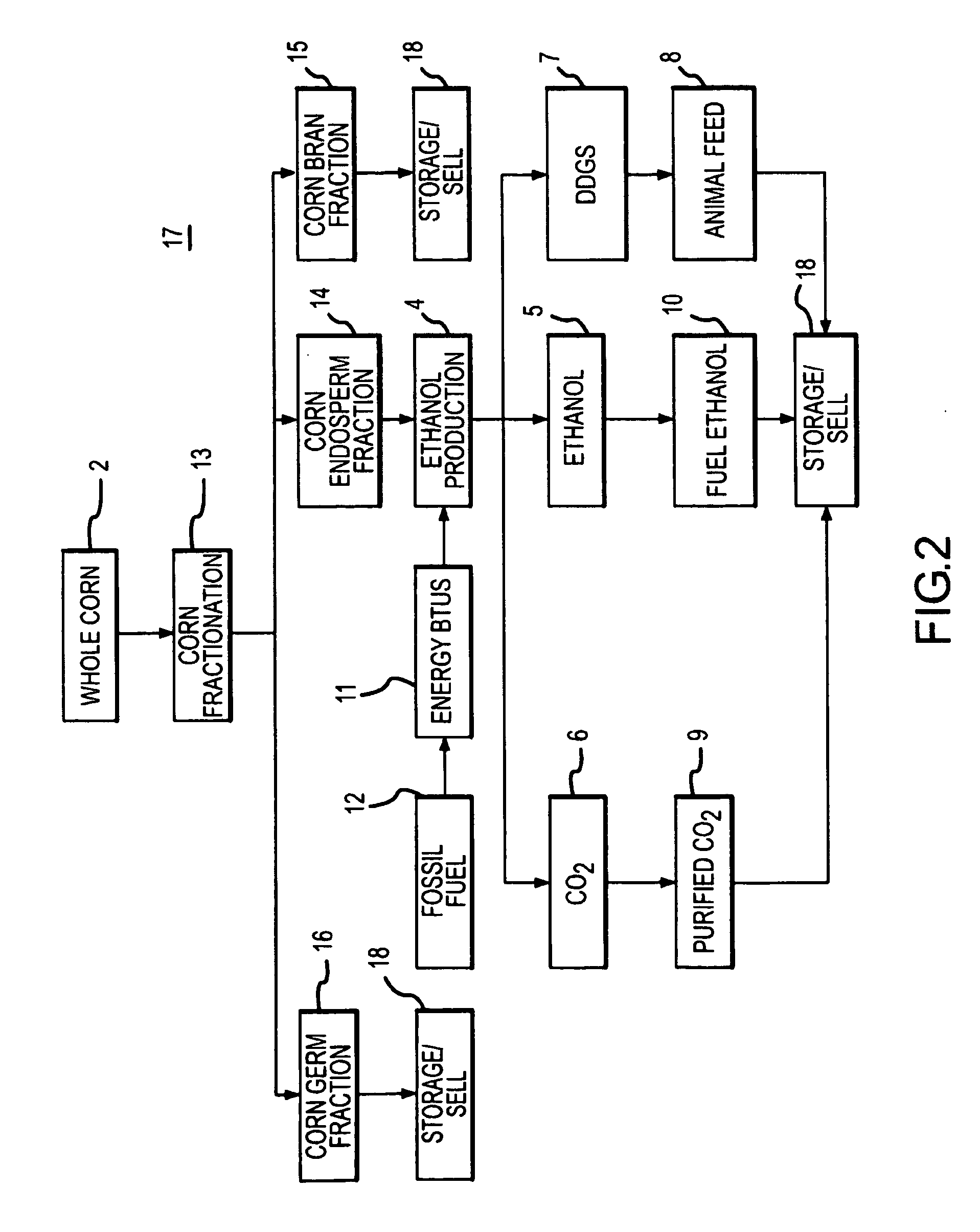Power production using grain fractionation products
a technology of power production and grain fractionation, which is applied in the direction of biofuels, lighting and heating equipment, chemical production, etc., can solve the problems of increasing the price of ethanol produced in proportion to the price of being paid for the ethanol produced, requiring the use of fossil fuels, and substantial unresolved problems with respect to conventional ethanol production
- Summary
- Abstract
- Description
- Claims
- Application Information
AI Technical Summary
Benefits of technology
Problems solved by technology
Method used
Image
Examples
example 1
Heat of Combustion for Corn Derived Samples
[0058]The gross heat of combustion (Qg (gross)) hereafter designated as Qg was conducted under thirty (30) atmospheres of O2 with a 1341 Oxygen Bomb Calorimeter (Parr Instruments). Measurements and data reduction were conducted in accord with the guidelines of ASTM D 4809(2). The Qg and net heat of combustion (Qn) are related by equations 1-4.
Qg(gross,t∘C.)=t·W-e1-e2-e3-e41000m(1)Qg(gross,25∘C.)=Qg(gross,t∘C.)+A(t-25)(2)t=tc-ta-r1(b-a)-r2(c-b)(3)Qn(net,25∘C.)=Qg(gross,25∘C.)-0.2122xH(4)
[0059]Definitions of the terms in equations 14 and the combustion data for each sample are given in Tables 6-9. The calorimeter energy equivalent factor was determined from combustion of benzoic acid certified against NIST Standard Reference Material (SRM) 39j(3).
TABLE 6Combustion Data - Corn Germ Fraction (16).Data Description and SymbolDataTime (min) of firing: a6.3Time (min) for 60% of total temperature rise: b7.8Time (min) after the temperature rise in wh...
example 2
[0062]A series of trials were conducted to assess the effect of temperature and pressure on the carbon dioxide extraction (21) of corn oil (23) from the corn germ fraction (16) obtained from the corn fractionation process (13).
Trial 1: 100 ml extraction of corn germ: 9200 psi and 90° C. 35.55 g of corn germ feedstock was ground and sieved, and placed in a 100 ml extraction vessel and extracted with pure carbon dioxide at a pressure of 9200 psi and a temperature of 90° C. The flow rate was 4 liters / minute. A total of 8.33 g of yellow corn oil was extracted (23.43% by weight of feedstock). The solvent to feedstock ratio was <8 (S / F<8).
Trial 2: 100 ml extraction of corn germ: 7500 psi and 80° C. 35.55 g of corn germ feedstock was ground and sieved, and placed in a 100 ml extraction vessel and extracted with pure carbon dioxide at a pressure of 7500 psi and a temperature of 80° C. The flow rate was 4 liters / minute. A total of 6.26 g of yellow corn oil was extracted (17.60% by weight of ...
PUM
 Login to View More
Login to View More Abstract
Description
Claims
Application Information
 Login to View More
Login to View More - R&D
- Intellectual Property
- Life Sciences
- Materials
- Tech Scout
- Unparalleled Data Quality
- Higher Quality Content
- 60% Fewer Hallucinations
Browse by: Latest US Patents, China's latest patents, Technical Efficacy Thesaurus, Application Domain, Technology Topic, Popular Technical Reports.
© 2025 PatSnap. All rights reserved.Legal|Privacy policy|Modern Slavery Act Transparency Statement|Sitemap|About US| Contact US: help@patsnap.com



